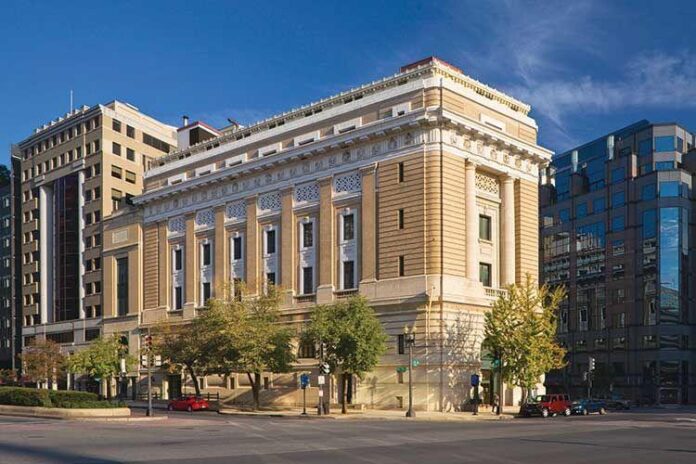Following several years of planning, a pandemic closure, a temporary
reopening and a $67.5m makeover, the National Museum of Women in the Arts (NMWA) in Washington, DC, officially reopens on 21 October, showcasing reconfigured galleries and event spaces, as well as a freshly sparkling exterior.
An ambitious new exhibition, The Sky’s the Limit, will welcome visitors back to the museum. The show features more than 30 previously unexhibited large-scale sculptures and immersive installations by 13 living artists, including Rina Banerjee, Shinique Smith and Ursula von Rydingsvard.
For the museum’s first full renovation since it opened in 1987, the goal was to “rethink the exhibition spaces, but without changing the historic footprint”, says Susan Fisher Sterling, NMWA’s director of more than 15 years. With the help of Baltimore-based architecture firm Sandra Vicchio & Associates, the museum’s once-small galleries have been opened up and expanded (with 20% more space) for “easier flow and more connections between artworks”, Sterling says.
With a focus on advocacy, an important part of NMWA’s mission, the museum’s reinstalled permanent collection continues a tradition of organisation by theme, from landscapes to still lifes, fibre art and even a couple of spaces focused on specific colours. (“Chronology ends up being the enemy of women artists and artists of colour,” says NMWA’s chief curator, Kathryn Wat, noting that these artists tend to be crammed towards the end of exhibitions, “when your feet and back hurt”.) Many of the newly installed works from the permanent collection have never been seen before, acquired in the past several years while the museum was closed. And in order to create a more flexible exhibition space for future shows—and support the new large-scale sculpture exhibition—the architects reinforced the museum’s walls, from top to bottom. “Now, we can hang anywhere on the wall,” Wat says.
Perhaps the most dramatic transformation has been of the museum’s upper floors, which now host new galleries, a performance hall and a learning commons. NMWA also made improvements to its accessibility, bettered its digital resources and revamped its research library, which is now open to the public. Sterling is particularly excited about a new studio space for community art classes. “It’s the first time we have an artmaking space,” she says. “Understanding art means understanding how things are made—and there’s now a transparent connection here between exhibitions, artmaking spaces and education.”

























